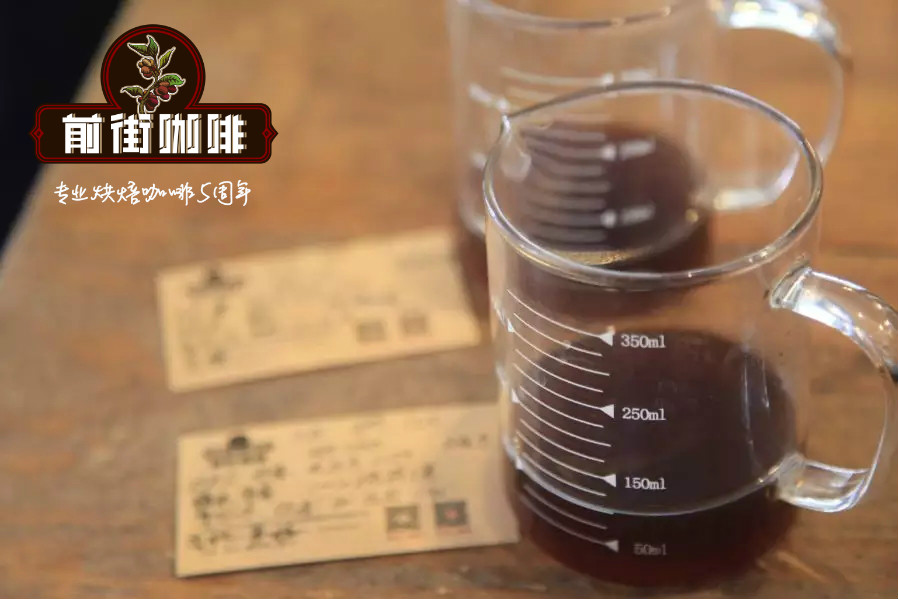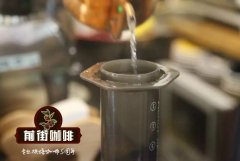What are the characteristics of Brazilian coffee? Introduction of High quality Coffee production area Mandy Kaila Mine in Brazil

Professional coffee knowledge exchange more coffee bean information please follow the coffee workshop (Wechat official account cafe_style)
Coffee was first introduced to Brazil in the early 18th century. In 1727, the Brazilian government sent a personable army officer to secretly bring coffee seeds from French Gaiana to Brazil on the pretext of mediating border disputes. It is said that the governor's wife of French Gayana was so fascinated by the officer that she secretly brought coffee tree seeds to him at a farewell dinner party. At present, 2 million hectares of land in Brazil is used to grow coffee, the largest is Arabica, and the beans will eventually be sent to large bakers in various countries, also known as Santos (in the name of the export port of Santos, not the producing area). Brazil has also proved to be able to produce gourmet coffee and small quantities of coffee, and the local boutique coffee can not only be provided by small-scale coffee farmers. The main coffee producing areas in Brazil are Sul de Minas South Minas, Matas de Minas Minas South East Mountain Forest, Cerrado Hirado, the north-central mausoleum of Chapadas de Minas Minas, Mogiana, Paran á Parana and Bahia Bachia. There are both traditional varieties and variants, such as Bourbon, Mondo Novo Mondonovo, Icat ú Ikatu, Kaduai, Iapar, cultivated card Taiyi. In the past, these beans were washed with water, but more and more people are using natural drying and half-sun treatment in the hope of showing the different characteristics of coffee beans in the process. Some larger estates and even every treatment are used. The harvest time varies from Brazil to Brazil, and the beans we import from Brazil are usually shipped between October and April of the following year.
The winner of the Brazilian Fine Coffee Super Cup Competition, the high-quality coffee producing area Mantiqueira de Minas, in order to promote the outstanding popularity of the region and let consumers know the producers, the identification marks of the farms and quality labels to be produced in the competition are put forward to ensure the high quality coffee in the Mandy Kaila mine. It demonstrates the sensory properties of the coffee produced in the designated area and the unique flavor found only in the Mandy Kaila mine (Mantiqueira de Minas). In this project, experience has proved that bakers will use these resumes. Through the code, the roaster can use the online system to trace the local coffee production, and he will find the story of the producer and the details of how to produce it.
The Mandy Kella region already has a certificate of origin and quality, and ensures that locally produced coffee has taken another big step forward. "the resume of origin is a new trend. Every day, more and more people want to know the story of their food consumption. Looking for information about the source of use, they want to know who produced it, what is its story, the climate of the region and how it affects the quality of the product. For baristas, this is an important element that divides production and marketing. Through our logo, we can let consumers know the source of coffee beans and quality assurance certificate, which is to help consumers discover the Mandy Kaila mine. In addition, we share our secular traditions, our producers' rare and amazing coffee enthusiasm. Resume of origin can help bakers strive for excellence, market competition is becoming increasingly fierce, product value-added and the creation of their own brand is now in progress.
END
Important Notice :
前街咖啡 FrontStreet Coffee has moved to new addredd:
FrontStreet Coffee Address: 315,Donghua East Road,GuangZhou
Tel:020 38364473
- Prev

Yemeni mocha, the world's only full-time coffee producer, game mocha, Yemen mocha.
For more information on coffee beans, please follow Coffee Workshop (Wechat official account cafe_style) Yemen Mocha Coffee Yemen borders the Arabian Sea to the south with a coastline of 1906 km, Oman to the east and Saudi Arabia to the north, with a border length of 1746 km (288km with Oman and 1458 km with Saudi Arabia). Yemen is dominated by mountain plateaus.
- Next

Standard beans of Coffee-Colombian Coffee introduces how to drink Colombian coffee?
Professional coffee knowledge exchange more coffee bean information Please pay attention to the coffee workshop (Wechat official account cafe_style) Colombia produces about 12% of the coffee beans in the world, although the output is not as good as Brazil, but the coffee beans are of good quality and mostly belong to high altitude areas, after wet processing, mellow and thick, sweet and sour smooth taste, strong road. There is a peculiar flavor of sweet potato peel for coffee.
Related
- Detailed explanation of Jadeite planting Land in Panamanian Jadeite Manor introduction to the grading system of Jadeite competitive bidding, Red bid, Green bid and Rose Summer
- Story of Coffee planting in Brenka region of Costa Rica Stonehenge Manor anaerobic heavy honey treatment of flavor mouth
- What's on the barrel of Blue Mountain Coffee beans?
- Can American coffee also pull flowers? How to use hot American style to pull out a good-looking pattern?
- Can you make a cold extract with coffee beans? What is the right proportion for cold-extracted coffee formula?
- Indonesian PWN Gold Mandrine Coffee Origin Features Flavor How to Chong? Mandolin coffee is American.
- A brief introduction to the flavor characteristics of Brazilian yellow bourbon coffee beans
- What is the effect of different water quality on the flavor of cold-extracted coffee? What kind of water is best for brewing coffee?
- Why do you think of Rose Summer whenever you mention Panamanian coffee?
- Introduction to the characteristics of authentic blue mountain coffee bean producing areas? What is the CIB Coffee Authority in Jamaica?

